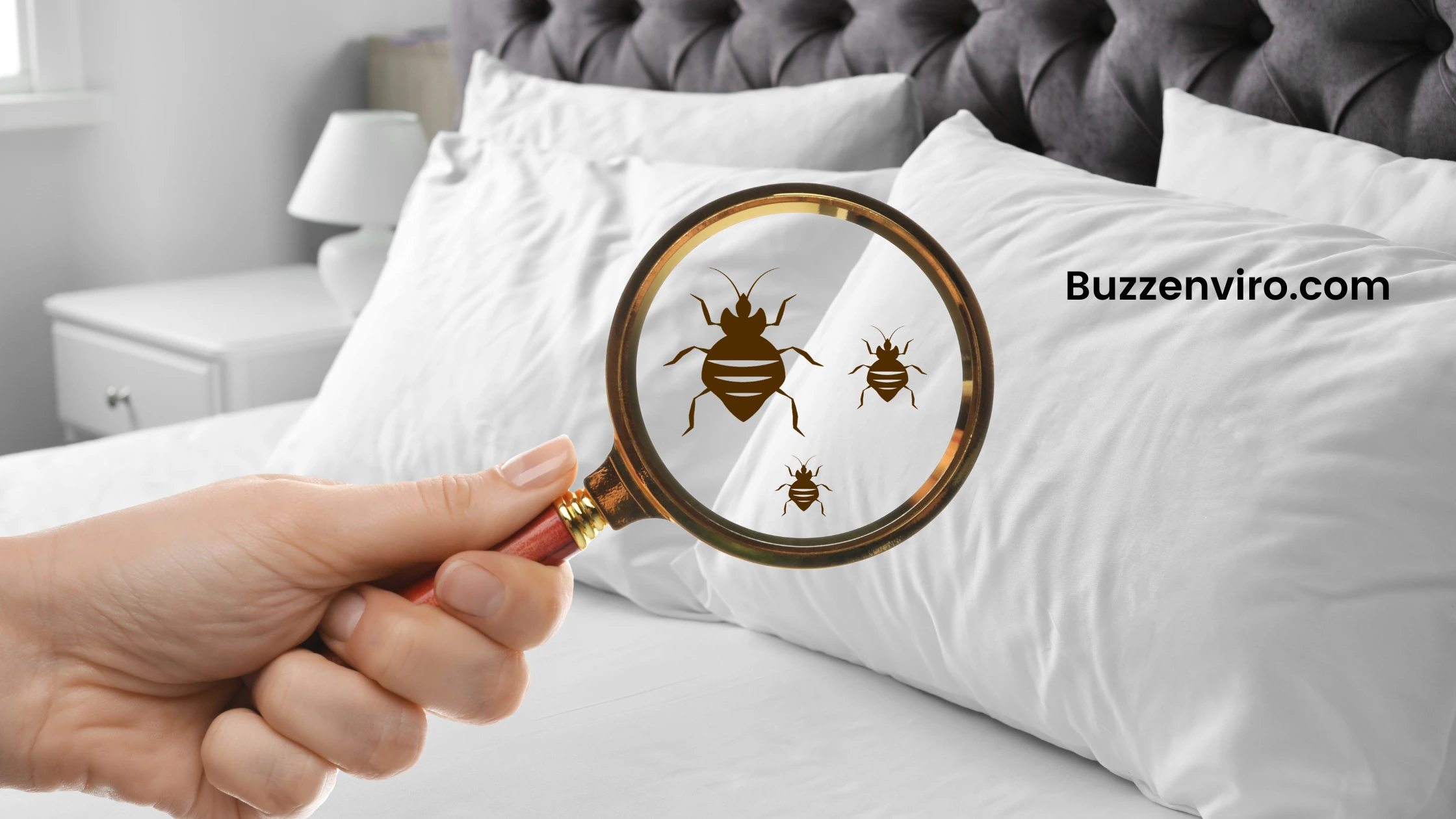Bed bugs are one of the most persistent pests found in homes and public places. Their small size and ability to hide in cracks and crevices make them difficult to detect until they cause noticeable symptoms. But where do bed bugs come from? How do they invade our homes, and where can you find them lurking?
What Are Bed Bugs?
Bed bugs are tiny, reddish-brown insects that feed on the blood of humans and animals. They are typically active at night and can be found hiding during the day in dark, secluded areas such as mattress seams, furniture cracks, and baseboards. Bed bug bites cause itchy, red welts, and an infestation can be a nuisance to handle if left unchecked.
Bed bugs don’t carry diseases, but their bites can lead to discomfort, allergic reactions, and secondary infections due to scratching. Their presence is a sign of poor hygiene, but it’s essential to note that bed bugs can invade even the cleanest environments.
Where Do Bed Bugs Come From?

1. In the Home:
The most common source of bed bugs is from other infested locations. Here are some specific places within your home where bed bugs may hide:
- Mattresses and Box Springs: Bed bugs are notorious for hiding in the seams of mattresses and box springs. If you have an infestation, this is the first place to check.
- Furniture: Bed bugs can nest in cracks and joints of furniture, especially in upholstered chairs and couches.
- Baseboards and Walls: Small cracks in the walls, behind baseboards, or in electrical outlets provide excellent hiding places for bed bugs.
- Clothing and Luggage: Bed bugs can hitch a ride on clothing, bags, and luggage, often from places like hotels, hostels, or public transportation.
2. In Nature:
Bed bugs are not exclusively indoor pests. They can be found in outdoor environments as well, especially in areas with dense vegetation or wildlife. Here’s where bed bugs can be found in nature:
- Wildlife Habitats: Bed bugs may live in nests of birds, bats, or other small animals, feeding on the animals’ blood. Once these animals abandon their nests, the bed bugs might find their way into nearby human structures.
- Public Spaces and Parks: In rare cases, bed bugs can be found in parks or outdoor areas where animals such as raccoons or squirrels have made their homes. These outdoor bugs can hitch a ride back into your house, especially in areas near dense woods.
3. From Public Places:
Bed bugs thrive in areas where people frequently gather. Some common places bed bugs originate from include:
- Hotels and Motels: Hotels are prime locations for bed bugs due to high turnover rates, international travelers, and shared spaces. If you stay in an infested hotel room, it’s easy for bed bugs to hitch a ride back home with you.
- Public Transport: Bed bugs can travel on buses, trains, taxis, and airplanes. They often hide in cracks and crevices in seats and luggage compartments.
- Movie Theaters and Libraries: Public places like theaters, libraries, and even office buildings are known to harbor bed bugs. These locations offer plenty of dark, hidden spaces for bed bugs to thrive.
Preventing Bed Bug Infestation
The best way to prevent a bed bug infestation is by being vigilant:
- Inspect Hotels and Motels: Always check the bed, furniture, and corners of hotel rooms for signs of bed bugs before settling in.
- Avoid Bringing Infested Items into Your Home: Be careful when purchasing used furniture or secondhand clothing. Always inspect items carefully for signs of bed bugs before bringing them inside.
- Seal Cracks and Crevices: Seal cracks and holes in walls, floors, and furniture to minimize hiding spots.
- Use Bed Bug Protectors: Encase mattresses and box springs in protective covers to keep bed bugs from nesting inside.
The History of Bed Bugs: A Long-Lasting Pest
Bed bugs, scientifically known as Cimex lectularius, have been a persistent part of human history for thousands of years. These resilient pests have evolved alongside humans, causing widespread discomfort and frustration. Understanding the history of bed bugs not only sheds light on their presence today but also explains why they remain a significant pest despite advancements in pest control.
Ancient Beginnings
The history of bed bugs dates back to ancient civilizations. Evidence suggests that bed bugs have been around for at least 3,500 years. The earliest recorded references to bed bugs can be found in ancient Egypt and Mesopotamia, where the pests were described in texts dating back to 1,000 BCE. Bed bugs were known to infest sleeping areas, particularly in the cracks and crevices of bedding or furniture. Archaeological finds indicate that even the ancient Egyptians suffered from bed bug infestations.
Bed bugs in ancient times:
- Egyptians: Bed bugs were reported as pests in Egyptian tombs, and ancient remedies for treating their bites have been found in Egyptian medical texts.
- Greeks and Romans: The ancient Greeks and Romans also dealt with bed bugs. Greek physicians wrote about these pests and their nuisance, describing remedies such as burning incense and using herbs to ward them off.
Middle Ages: A Persistent Problem
During the Middle Ages, bed bugs continued to plague European societies. By this time, they were widespread in both private homes and public places. Bed bugs were commonly found in the bedding of castles, inns, and even ships. Their reputation as pests grew as they were associated with poor hygiene, which was widespread during this time period due to lack of cleanliness and inadequate sanitation.
Medieval records:
- Bed bugs were mentioned in medieval European literature, where they were seen as pests of the poor, symbolizing the lack of hygiene.
- Despite their presence, there were no effective methods of eliminating them. People would often attempt to use various herbs, oils, and fumigation techniques to drive them away, but these efforts were largely ineffective.
The Rise of Bed Bugs in the Early Modern Era
During the 17th and 18th centuries, bed bugs became increasingly common in European and North American homes. The expanding urban population, along with increasing trade and travel, provided ideal conditions for bed bugs to spread. Bed bugs traveled from one place to another through human migration, particularly as more people began traveling on ships, and long-distance trade routes were established.
16th and 17th centuries:
- Bed bugs were especially prominent in colonial homes in North America, where they were often brought over by European settlers.
- The growing number of bed bug complaints led to a number of unsuccessful attempts to find remedies, such as using sulfur, tobacco, and vinegar. These methods, however, failed to eradicate bed bug populations.
The 20th Century: A Brief Decline
In the mid-20th century, bed bug populations saw a significant decline, thanks to the widespread use of pesticides, particularly DDT (Dichlorodiphenyltrichloroethane). After World War II, DDT became a popular choice for controlling a wide variety of pests, including bed bugs. As a result, bed bugs were virtually eliminated in many Western countries by the 1950s and 1960s. This period marked a temporary reprieve from the constant threat of infestations, and bed bugs were no longer a common household problem for several decades.
Post-WWII decline:
- The effectiveness of DDT led to a significant reduction in bed bug populations, and many people believed that bed bugs were a thing of the past.
- Hygiene practices improved, and the widespread use of chemical pesticides seemed to have controlled the problem.
The Resurgence of Bed Bugs in the 21st Century
However, starting in the late 1990s and early 2000s, bed bugs began to make a strong comeback, particularly in urban areas. This resurgence has been attributed to a combination of factors, including:
- Increased global travel: As international travel increased, bed bugs were able to hitch rides on luggage, clothing, and furniture, spreading across borders and infecting hotels, homes, and public transport.
- Pesticide resistance: Bed bugs have developed resistance to many of the chemicals that were once effective at controlling them. This has made it harder to control infestations.
- Lack of awareness: As bed bugs disappeared from public consciousness for decades, many people weren’t familiar with how to identify them or how to prevent an infestation.
Resurgence trends:
- Bed bugs became especially prevalent in major metropolitan areas, where dense populations and high turnover rates in hotels, apartments, and public places provided ideal breeding grounds.
- Public health organizations and pest control experts began noticing the rise in bed bug complaints, and research efforts ramped up to understand the resurgence.
- New, more targeted treatments, such as heat treatments, bed bug-proof mattress encasements, and integrated pest management strategies, have been developed in response to the resurgence.
Bed Bugs in Modern Times
Today, bed bugs remain a significant pest in homes, hotels, and other public spaces worldwide. Despite advances in pest control and awareness, their ability to hide in small cracks and their resistance to pesticides continue to make them a persistent problem. Their resurgence is seen as a reminder that pests like bed bugs can adapt and thrive in human environments, making it important for people to stay vigilant in preventing and managing infestations.
Conclusion
Bed bugs are resilient pests with a long history of causing discomfort to people. They can originate from a variety of locations, both inside and outside the home, and often hitch a ride on luggage or secondhand furniture. Understanding where bed bugs come from and being aware of where they hide is essential in preventing infestations. Regular inspections, good hygiene, and taking preventative measures can help protect your home from these pesky invaders.





